
|
Books in Print Contact Subscribe for New Releases we are currently closed to submissions | |
Quick Buy Links 
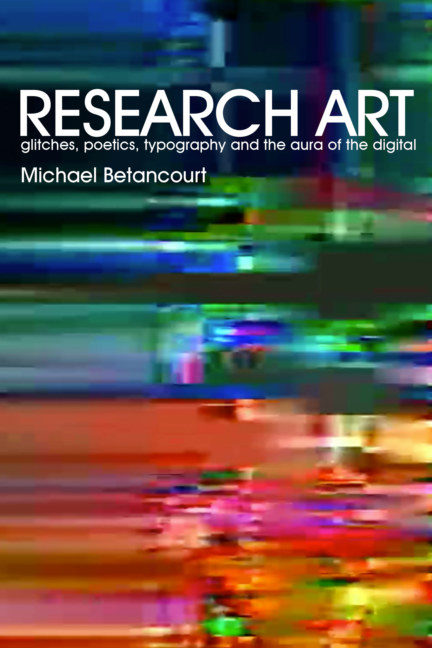
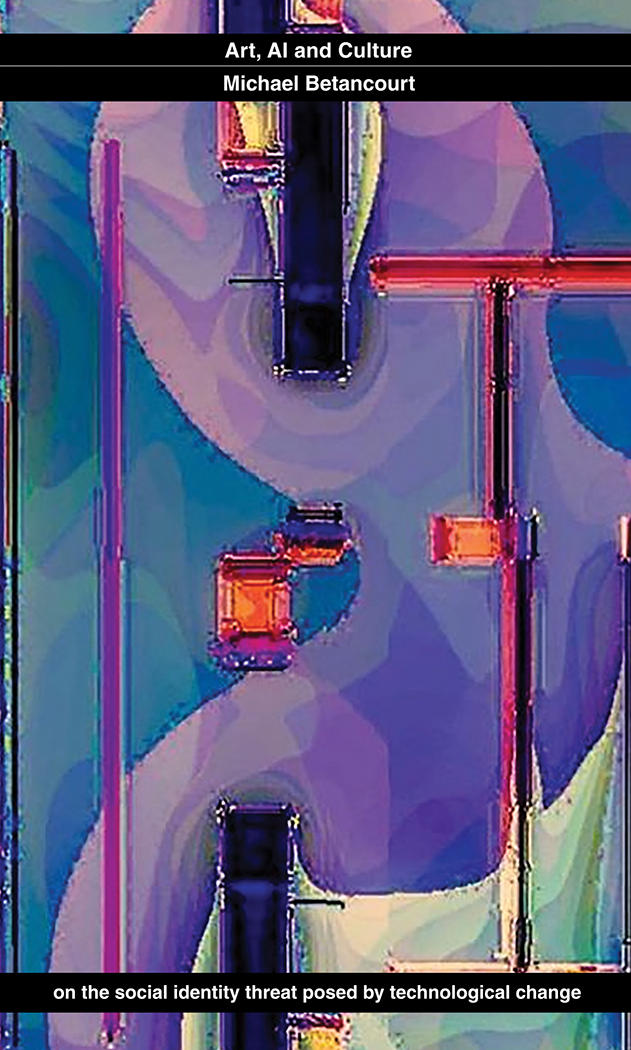
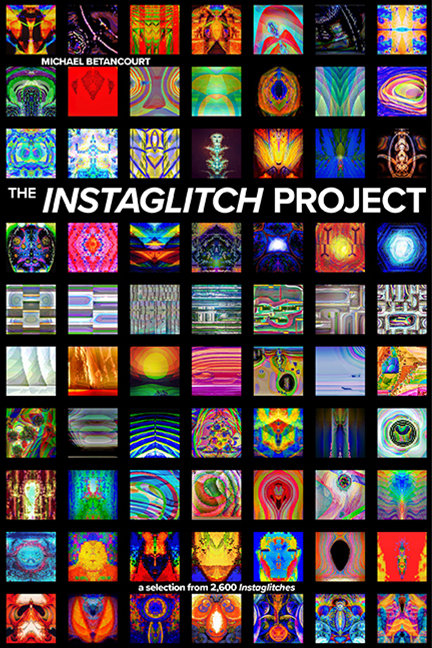
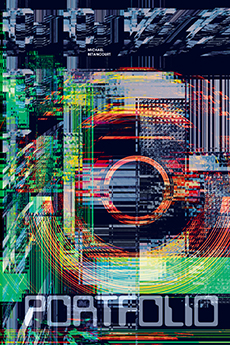
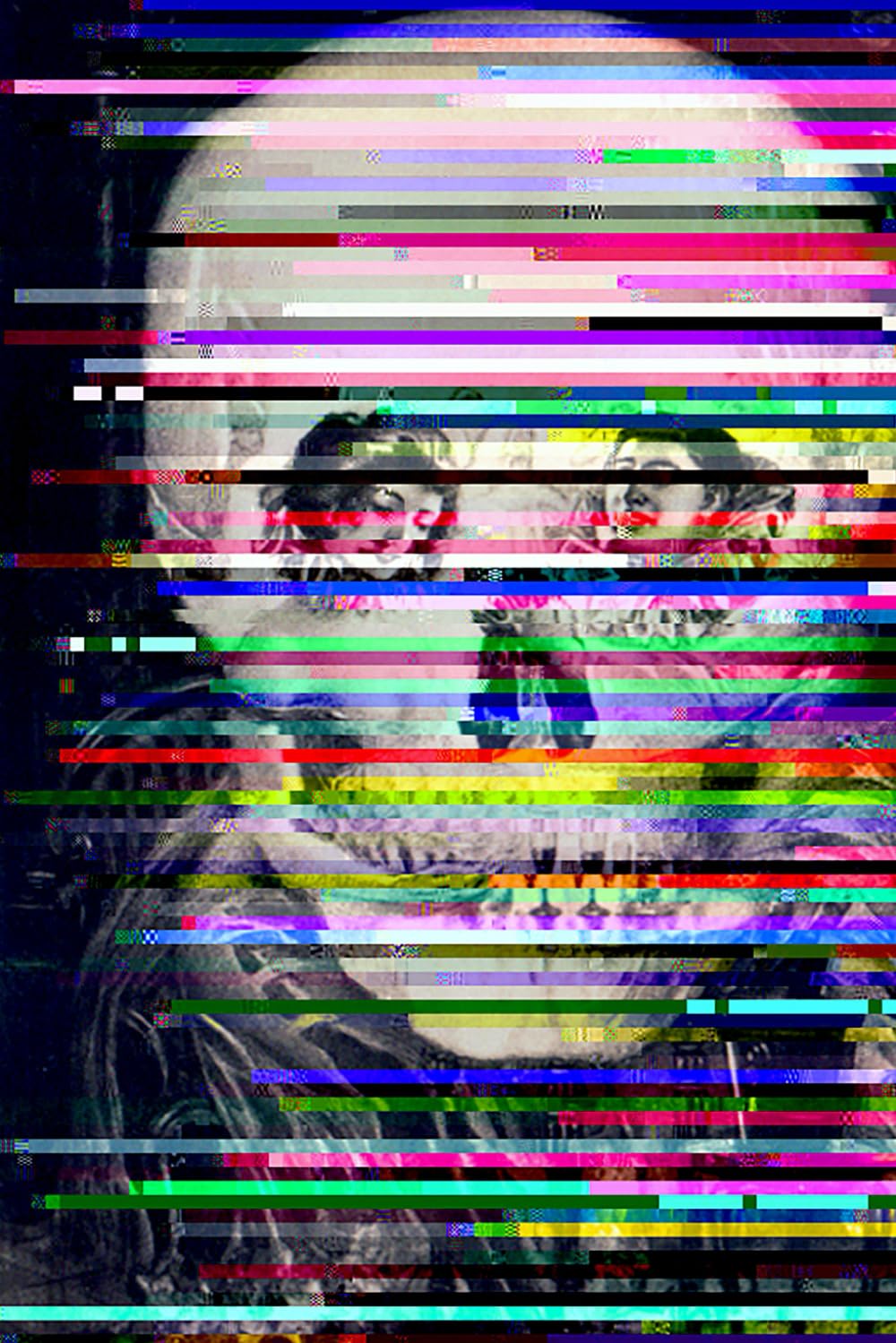
| ||
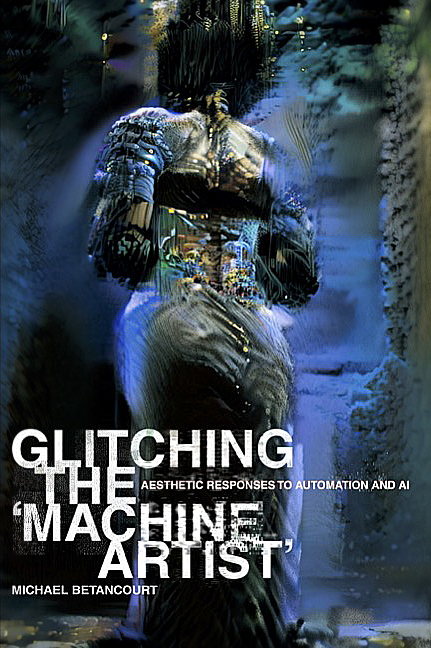
|
Glitching the 'Machine Artist':
aesthetic responses to automation and AI by Michael Betancourt Paperback, 212 pages, full color illustrations ISBN 9780979321580 Buy Direct from the Publisher Now or buy it from bookshop.org or amazon.com or Barnes & Noble or Boomerang Books Editorial Reviews:
"The strength of Betancourt's clarity emerges from his personal histories within Glitch Art communities as well as his academic expertise. Those of us who built the cultural matrixes of which he speaks know the importance of crafting critical 'hystories' to tell our stories and translate forgotten pasts into the possible futures. From this point of view, Glitching the 'Machine Artist' becomes an account of many glitches in time, proving that Glitch Art still surprises, even now, in our AI Era." "What does it mean to create art in an age where machines not only imitate but generate aesthetic expression? Glitching the Machine Artist: Aesthetic Responses to Automation and AI delves into this urgent cultural question, tracing a lineage from the rise of industrialization to the era of generative AI. Betancourt adopts a distinctive structural rhythm through his use of brief, sharply focused chapters that function like theoretical "glitches" themselves. This modular architecture mirrors the fragmented, recursive nature of glitch art, allowing each chapter to loop into and comment on others while avoiding the teleological drift of traditional linear argumentation. From the anxiety-laden figure of the 'machine artist' to the cultural embrace of malfunction as a sign of authenticity, this book unpacks how errors have come to signify something more profound: the reassertion of the human in an automated world. Betancourt shows how Glitch Art is not merely a genre but a philosophical and political stance—a refusal to accept seamless automation as a given, and a call to recognize the ideological stakes behind the aesthetics of failure. Drawing on centuries of artistic responses to mechanization, Glitching the Machine Artist charts how the automation of labor, from photography to AI, threatens to erase the traces of the human hand. But through glitching, artists continue to intervene, disrupt, and remind us that even the most perfect machine can be made to stutter—and in that stutter, agency returns.
This is not just a history—it is a blueprint for critical resistance and aesthetic defiance in the face of digital capitalism and a rising new age."
About this book: Fear of the 'machine artist' reflects a deep cultural anxiety about industrialization, shaped by unresolved conflicts over automation and its potential to supplant human artists. Automated machinery represents both a technical development and a social paradigm that redefines labor, authorship, and creativity itself. Glitching the 'Machine Artist' is neither utopian nor dystopian. It offers the first comprehensive theory connecting Glitch Art to its industrial foundations. By blending analysis, theory, and criticism, this book shows how debates over AI continue a centuries-long negotiation between human agency and automation. It links these generative technologies to the assembly line and industrialization while exploring their aesthetic influence on art. By analyzing how photography functioned as the original 'machine artist,' this book explains why current fears about AI-generated art echo historical anxieties about objectivity, originality, and human agency. Glitch Art offers a unique vehicle to examine these entanglements. From eighteenth-century Romanticism through to analogue and digital media, artists have responded to technological innovation in three distinct ways: either by emphasizing the artist's handicraft, or in a metaphysical refusal of machinery, or in a formalist embrace of medium-specific 'purity.' The contemporary challenge is to develop strategies to understand, critique, and defy the power of technological change. As AI transforms our world, the future of human agency is in question. The problem for artists, technologists, and everyone concerned with human creativity lies with the links between aesthetics, innovation, and the role of the artist—challenging assumptions about expression versus randomness, originality versus reproduction, and human versus machine. Acknowledging these dynamics opens up the possibility for radical change, beyond merely asserting human agency, or surrendering to technological determinism. | |

|
Glitch Theory: Art and Semiotics by Michael Betancourt Paperback, 192 pages, full color illustrations ISBN 9780979321557 Buy Direct from the Publisher Now or buy it from
bookshop.org
or
amazon.com
or
Barnes & Noble Editorial Reviews:
"This concise yet profound dive into the world of digital disruptions reveals how glitches echo deeper meanings, challenging our perceptions of digital flaws as artistic expressions. A compelling read for artists and digital enthusiasts alike."
"What we see as mistakes or errors, are much more than that, they can be a way to express something unique. Betancourt's writing is an exquisite tour de force. By delving into the complexities, uncertainties, past and future of glitches and their relationship with semiotics and media, this book offers artists, enthusiasts and academics, new perspectives and insights. Whether you're after an ontological perspective or the in-depth analysis of glitches through the lens of semiotics, this is a book you should dip into. Its rich reference packed pages, provide an in-depth and current exploration of the aesthetic, technical and philosophical dimensions of glitch art, while emphasizing its significance in contemporary visual culture. It's the book I wish I had 20 years ago."
"Glitch Theory is an essential text for understanding the exciting art movement widely practiced online, and increasingly offline, known as Glitch Art. This book documents the ideas behind these beautiful digital manipulations, and their evolving dance with encoded annihilation. What the reader will encounter is a dynamic and in-depth study of visual noise, electronically hallucinated with intentional/accidental malfunctions."
"Tracing the entangled lines of accident, expression, and context that converge in Glitch Art, Betancourt excavates the paradoxes of materiality and meaning that /glitch/ reveals in digital media. He ranges far once he kicks off from the painstaking work of situating semiosis in the liminal territories of /glitch/, into critical evaluations of glitch aesthetics, of encultured knowledge and intentionality, synesthesia and AI. In the end, his themes converge, accelerate, and pivot into an unresolved cadence, but a cadence nonetheless, refractory and refracted, resolutely unresolved, like unto /glitch/ itself."
"As one of the pioneers of this niche medium, Betancourt goes through the deeply buried history from analog to digital of Glitch Art with precision, putting into question and creating a metaphysics from our relationship with electronic devices. He ushers mythology, literature and linguistics while peeling the paradoxical relation of how glitches turn into intentional methodologies of creation. The essential connection of the ghost in the machine inevitably will keep accompanying us long into the future."
"As artistic compressions in elaborate production models, Glitch Art wants (and must) be discovered in a complex way by the audience. Assuming that art would disappear from the Earth and would have to be decoded from the luckily surviving Glitch Art, Michael Betancourt's glitch semiosis would be the theoretical manual with which this reconstruction could succeed. Betancourt once again presents a new standard work, exciting to read for anyone who wants to seriously engage with the theory development within Glitch Art. In the area of tension between Digital Theory and Criticism of Capitalism, Betancourt created a Theory of Discursive Digitality in 2016 with the text The Critique of Digital Capitalism: An Analysis of Political Economy of Digital Culture and Technology. The new publication can be understood as an attempt at Digital Aesthetics in the Post-NFT Era. It implements itself as a subversive stabilizer: in the theoretical foundation of a Glitch Philosophy, which also prepares the audience for an art historical and curatorial reassessment of this art movement." About this book: What do glitches reveal about the normally invisible processes behind our interpretations? Glitches and Glitch Art illuminate the unseen assumptions, ideology of dialectical thinking, and role of established knowledge that shapes as well as determines our engagement with the world. Betancourt builds on the role of perception in guiding these interpretations to explore the possibilities offered by glitches for addressing digital media. Not confined to esoteric questions of semiosis, this study presents an expansive model of ambivalence and ambiguity whose ramifications address how initial assumptions and beliefs create meaning. Tracking glitches across technical media old and new, and moving from early abstraction's attempts to visualize a transcendental spiritualism through to contemporary AI generated art and media, Betancourt describes how glitches are not just technical failures but products of the instabilities between human interpretations and autonomous machinic operations that create a 'discursive aesthetic' guided by cultural fantasies of digital media's immateriality that idealize it as a perfect, transcendent form. A journey to the roots of meaning itself, Betancourt offers a paradigm that unpacks how engaging the glitch can become a critical model not only for artists, critics, and academics, but for anyone interested in Contemporary Art, tactical media, and cultural activism.
| |

|
The Databender's Notebook by Michael Betancourt Blank Notebook, 156 pages ISBN 978-0-9793215-6-6 Buy Direct from the Publisher Now or buy it from amazon.com About this book: The Databender's Notebook is an essential tool for Glitch Artists to track and record changes to Hexdecimal data and the impacts of those changes. This blank notebook is specially formatted to make keeping track of files, track changes, and identify the best results a breeze! | |

|
Art, AI and Culture by Michael Betancourt Paperback, 116 pages, full color illustrations ISBN 9780979321542 Buy Direct from the Publisher Now or buy it from
bookshop.org
or
amazon.com
or
Barnes & Noble About this book: Art, AI and Culture interrogates the aesthetic heritage of Modernism as it informs contemporary cultural applications of AI which demonstrate there is no escape from the kaleidoscopic lineage of colonialism where the status of "human" and all the rights that entails were withheld from the colonized in general, and from slaves, labor, and women specifically. This analysis theorizes the social identity threat posed by AI's challenges to existing social, cultural, political, and economic orders. Digital technology is not exempt from this historical lineage that transforms familiar questions of economic displacement caused by machine learning and digital automation into new battles in an on-going conflict over social status and position. This cultural approach to AI reveals the ways that it transforms expressions of identity, leisure and luxury into opportunities for profit extraction. Social phenomena, (including racism, sexism, and nationalism), capture individuals in a web of systemic control where digital automation provides a mechanism preserving the existing hierarchies and social status that it might otherwise challenge. Drawing on a reconception of capitalism as a proxy for social status and position, this study critiques of the fantasy that replacing all human labor will create a fully automated luxury utopia without bias, oppression, or social change. | |

|
Research Art: by Michael Betancourt Paperback, 112 pages, 21 full color illustrations ISBN 9780979321504 Buy Direct from the Publisher Now or buy it from
bookshop.org
or
amazon.com
or
Barnes & Noble About this book: Research Art is about margins and marginality in the art world as sources for critical engagements in the studio. It builds on the pioneering work of critical theorist and artist Michael Betancourt, who has used glitches as an integral part of his art since the early 1990s. This book presents his thinking about his own work linking theory and practice in a larger context of conceptual and theoretical concerns that are neither a statement of intentions, nor merely a subjective series of claims about past accomplishments. This book discusses his digital glitch movies, typoetry, abstract photography, and the Instaglitch series as direct examples of the connections between theory and practice, illuminating his proposal for 'Research Art' as a domain equal to the 'Business Art' familiar from exhibitions in the gallery-fair-museum network. Polemical and often challenging, it explores the role of expectations in making and interpreting art from the vantage point of the studio, rather than as a critic or historian, arguing that "Research Art" is the evolution of the critical position developed by Conceptual Art and Situationalism as the avant-garde program in art came to an end, an adaptation to the changed Contemporary reality of AI, globalization, and digital technology, an oppositional art made in the shadows of digital capitalism. | |

|
The Instaglitch Project by Michael Betancourt Paperback, 112 pages, 52 full color illustrations ISBN 9780979321528 Buy Direct from the Publisher Now or buy it from
bookshop.org
or
amazon.com
or
Barnes & Noble About this book: This book presents a selection of 52 full color images from Michael Betancourt's "Instaglitch Project" that exploited the aberrant and unheimlich results of image handling and processing by the Instagram photosharing app-it derived novel examples of Glitch Art from the faults inherent to the iPhone system. This project uses these inconsistencies as a mechanism for aesthetic creation that provides evidence for the fantasy of control that the "walled garden" of apps create. The development of the Instaglitch offers a counter to this hegemonic ideology via a studio practice that exploits the Instagram app's very limited 'degrees of freedom' without altering the app itself or employing less restrictive software. These works are examples of how repeated processing and 'filtering' of the same image within the same system-a feedback loop-magnifies the instabilities inherent in its operations. The 2,600 works in this series of static images demonstrates programmatic failures that are masked by its normal use, but are systemic instabilities-their identification allowed me to generate works by manipulating their impacts on a blank (white) image. | |

|
Portfolio: by Michael Betancourt Paperback, 212 pages ISBN 9780979321511 Buy Direct from the Publisher Now or buy it from
bookshop.org
or
amazon.com
or
Barnes & Noble About this book: This Portfolio of works produced between 1990 and 2021 is the companion to the book Research Art by Michael Betancourt. It is a full color chronological documentation of movies, statics and social installations. This concise summary reveals a diverse practice addressing how media history, digital technology, and capitalist ideology inform studio practice. At once very specific, the work collected here reveals a consistent and coherent aesthetic realized by an artist who self-consciously placed himself on the margin of the art world as a way to achieve critical distance. Showing both representative stills and documentary information, this Portfolio reveals the constant concerns with critical praxis that unify Betancourt's various projects. | |